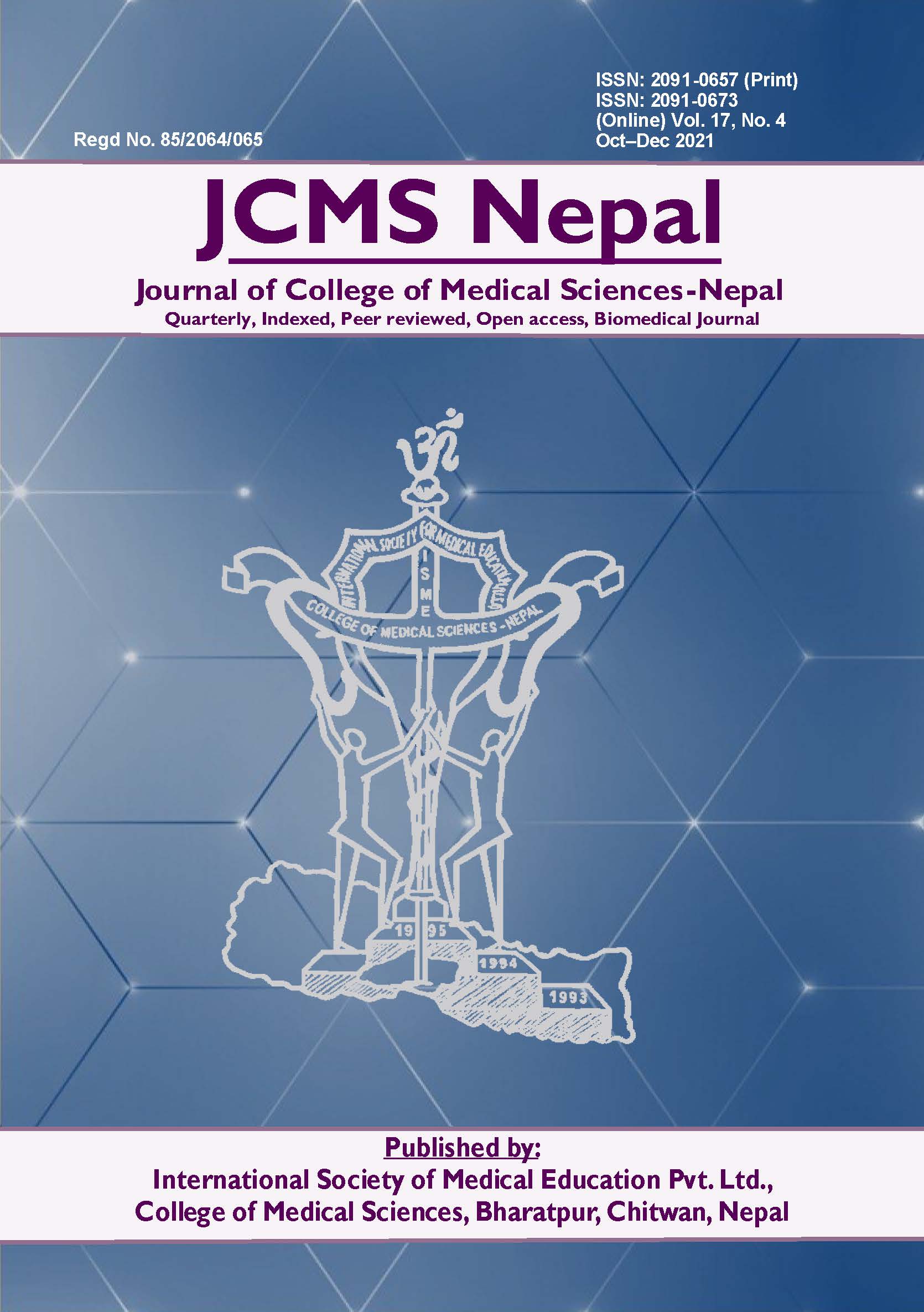Comparison of Urine Dipstick Nitrite Test with Urine Culture in the Diagnosis of Urinary Tract Infection
DOI:
https://doi.org/10.3126/jcmsn.v17i4.38388Keywords:
MDR, nitrite test, urine dipstick, UTIAbstract
Introduction: Urine dipstick is a rapid, cost-effective test used as a marker for quick detection of bacterial Urinary Tract Infection (UTI). Nitrite test depends on the conversion of nitrate to nitrite by the action of Gramnegative bacteria present in urine. The purpose of this study was to determine the sensitivity, specificity, positive predictive value and negative predictive value of Nitrite test in relation to urine culture.
Methods: Two hundred fresh uncentrifuged urine samples with suspicion of UTI were collected and tested for nitrite by using urine dipstick strip (COMBI-10SL) prior to the culture. Nitrite was considered
as positive if there was a change in color of dipstick from colorless towards pink within 60 seconds.
Quantitative urine culture was performed by using the strips calibrated to deliver 0.02 μL of urine on
Cystine Lactose Electrolyte Deficient (CLED) agar. All plates were incubated at 37°C and read after 24
to 48 hours. Culture was considered as the gold standard to evaluate the performance of the dipstick
test. Antimicrobial susceptibility testing (AST) of the isolates was done using the Kirby-Bauer disc
diffusion method following Clinical and Laboratory Standards Institute (CLSI) guidelines.
Results: Out of 200 samples, 36 (18.00%) samples showed significant growth whereas 164 (82.00%) samples did not show significant growth. Out of 36 samples, 25 (69.44%) samples showed positive nitrite test while 11 (30.55%) showed negative nitrite test. The sensitivity, Specificity, Positive Predictive
Value and Negative Predictive Value of the nitrite test were 69.44%, 89.63%, 59.52% and 93.03%
respectively. The most frequently isolated bacteria were Escherichia coli 29 (80.55%) followed by
Enterobacter aerogenes 3 (8.33%) and Pseudomonas aeruginosa 2 (5.56%). The antimicrobial profile of
the isolates revealed that 14 (38.89%) isolates were MDR.
Conclusions: Dipstick test for the detection of nitrite in urine is sensitive and specific and can be used for the primary screening of UTI in a resource-limited setup. Confirmatory diagnosis should be followed by the urine culture method.
Downloads
Downloads
Published
How to Cite
Issue
Section
License
Copyright (c) 2021 Sanjeep Sapkota, Sanjib Adhikari, Prativa Poudel, Ramesh Sharma Regmi, Sujata Kafle, sangita Baral, Nirajan Dallakoti, Jid Chani Rana, Bipin Mahato, Komal Raj Rijal

This work is licensed under a Creative Commons Attribution-NonCommercial-NoDerivatives 4.0 International License.
This license enables reusers to copy and distribute the material in any medium or format in unadapted form only, for noncommercial purposes only, and only so long as attribution is given to the creator.




